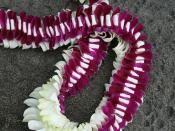Jobless in Paradise
Hawaii's economy has changed drastically since statehood. In 1958, defense, sugar, and pineapple were the primary economic activities, accounting for 40% of Gross State Product (GSP). In contrast, visitor-related expenditures stood at just over 4% of Hawaii's GSP prior to statehood. Today the positions are reversed; sugar and pineapple constitute about 1% of GSP, defense accounts for just under 11%, while visitor-related spending comes close to 24% of Hawaii's GSP (Channel).
The movement toward a service- and trade-based economy becomes even more apparent when considering the distribution of Hawaii's jobs across sectors. The share of the economy's jobs accounted for by manufacturing and agriculture has declined steadily since 1959 and each currently makes up less than 4% of total jobs in the economy. At the same time, the shares of jobs in wholesale and retail trade and in services have risen, standing at about 23% and 28%, respectively (Channel).
Since 1991, Hawaii's economy has suffered from rising rates of unemployment. This stands in marked contrast to the period 1980 to 1993, when the state enjoyed very low unemployment rates relative to the nation as a whole. But by 1994 the recession had raised Hawaii's unemployment rate to the national average (6.1%) for the first time in 15 years. In 1995, the state's unemployment rate improved slightly in the first eleven months of the year to 5.4 percent, a 0.6 percentage point decline from the first eleven months of 1994. Despite the lower unemployment rate, the total number of wage and salary jobs declined by 0.6 percent during the first eleven months of 1995. This was due in part to a fall in part-time jobs that are often held by persons who also have primary jobs elsewhere in the economy. The number of construction jobs declined by more...


